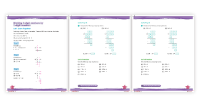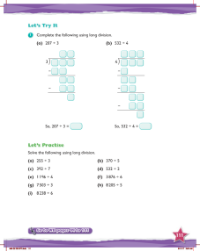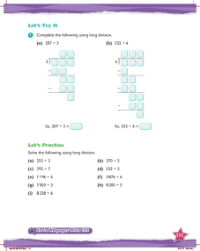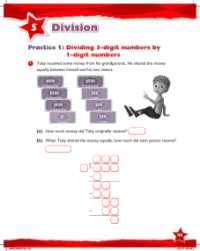Max Maths, Year 5, Learn together, Dividing 3-digit numbers by 1-digit numbers
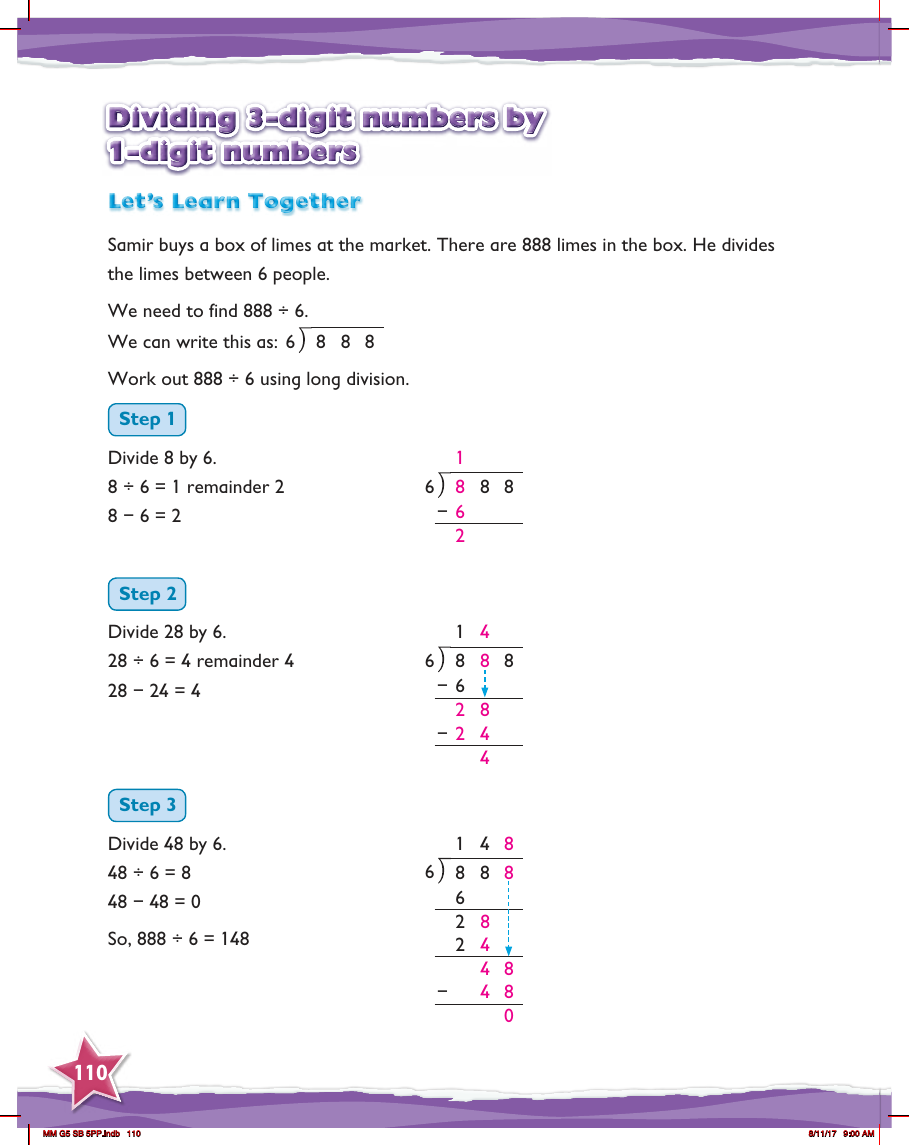
Maths Resource Description
In a mathematics lesson for Year 5 students, the concept of dividing 3-digit numbers by 1-digit numbers is explored through a practical example. Samir has purchased a box of limes containing 888 limes and plans to distribute them evenly among 6 people. To solve this problem, the students are introduced to the long division method. The process begins by dividing the first digit of the 3-digit number by the 1-digit number. In this case, 8 is divided by 6, which results in 1 with a remainder of 2, because 8 minus 6 leaves 2.
The lesson continues with the second step, where the remainder is carried over to the next digit of the 3-digit number, forming 28. This new number, 28, is then divided by 6, giving a quotient of 4 with a remainder of 4, as 28 minus 24 equals 4. In the third and final step, the last remainder is again carried over to the next digit, creating the number 48. When 48 is divided by 6, the result is 8 with no remainder, because 48 minus 48 equals 0. The complete long division process demonstrates that 888 divided by 6 equals 148, with no remainder left over. This exercise not only teaches the method of long division but also reinforces the students' understanding of division as an equitable distribution.
